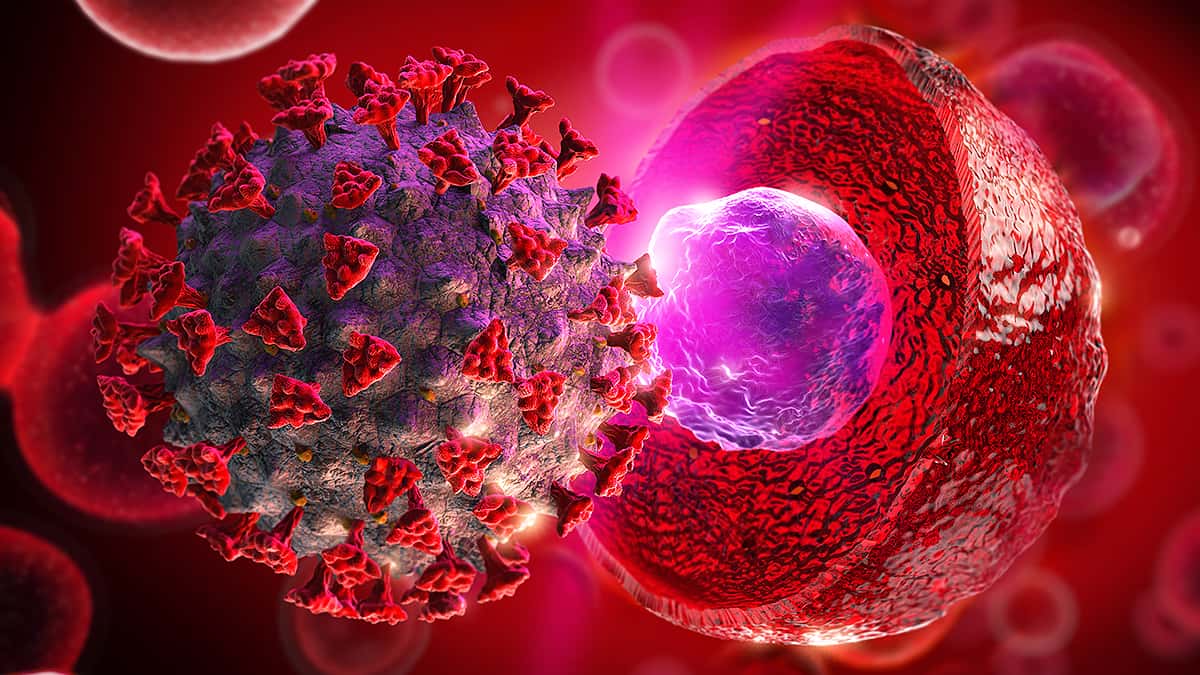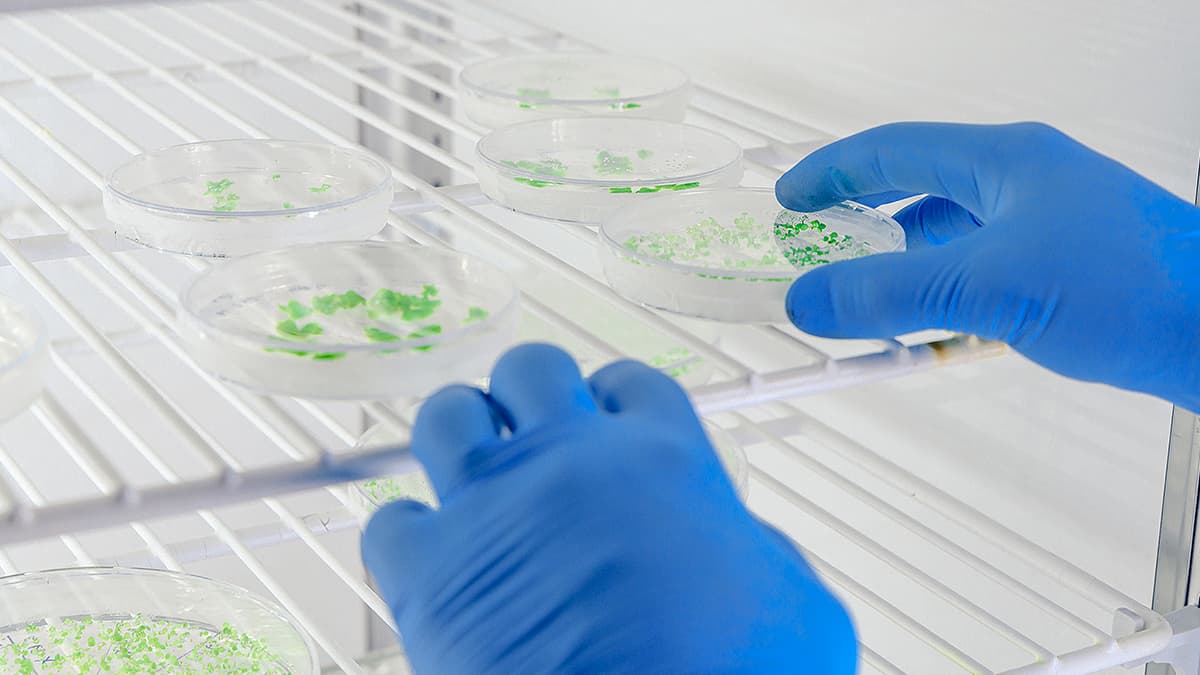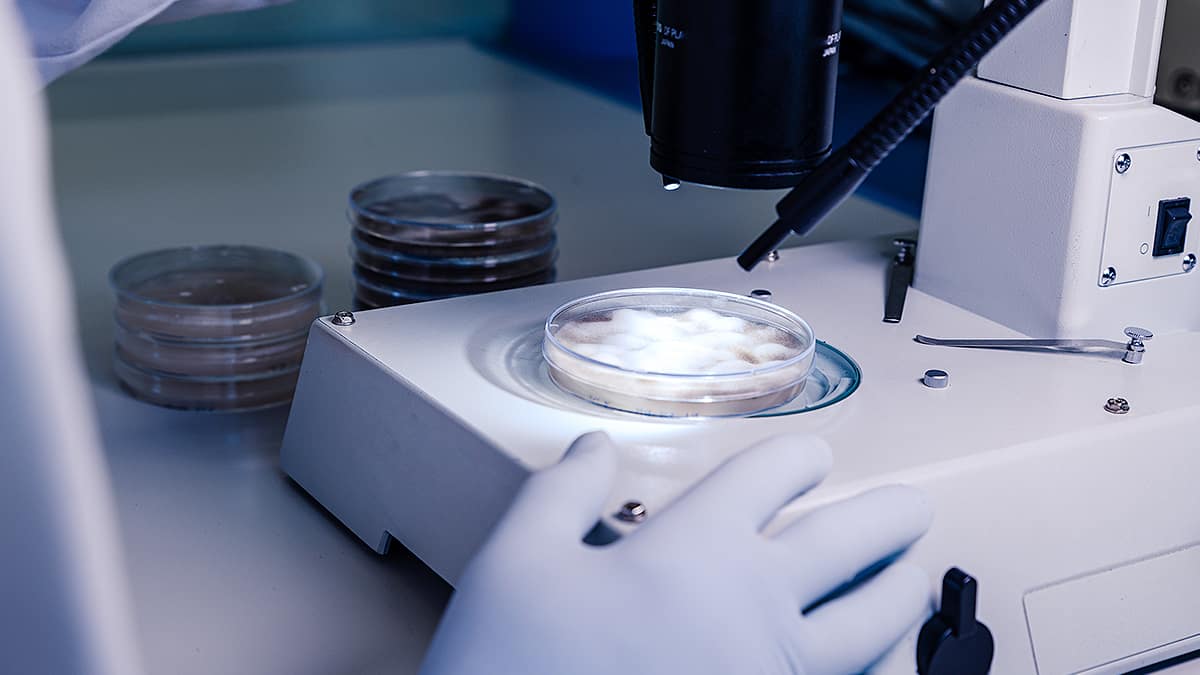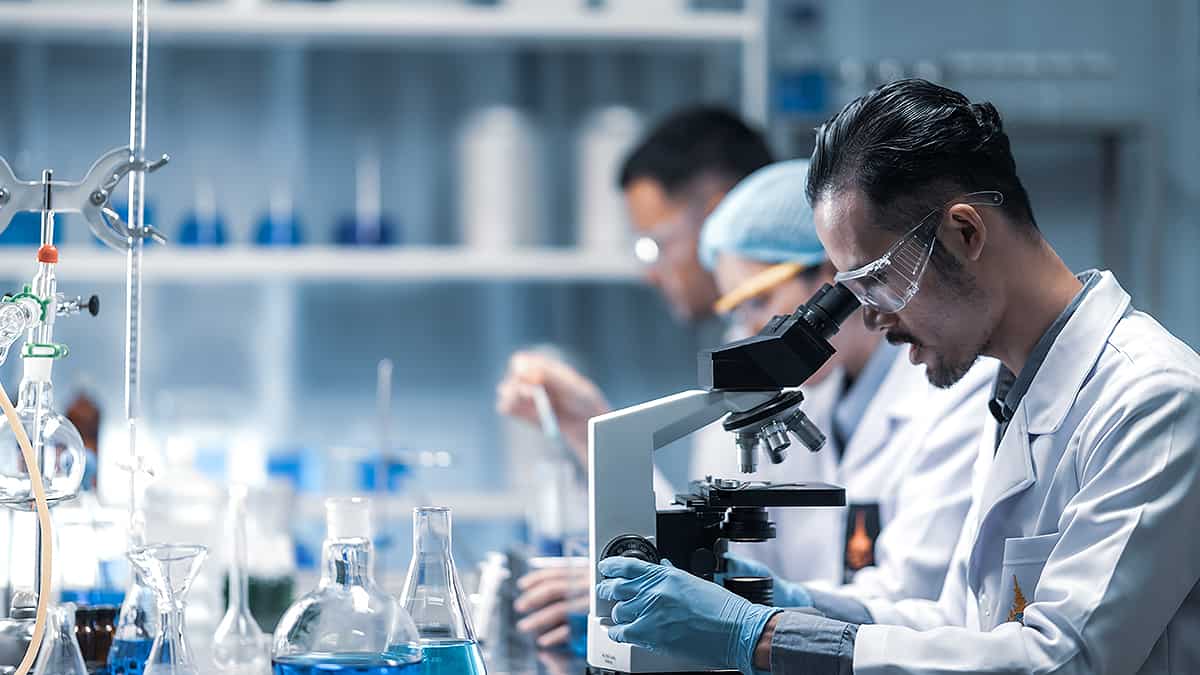World’s Second Fastest Supercomputer Shows How COVID-19 Affects the Body
COVID-19

Researchers are using all the tools they have in order to better understand and fight COVID-19. In a new study published in the journal eLife, scientists used the world's second fastest supercomputer to quickly analyze genetic data from COVID patients in order to find out how the virus changes our bodies, and ultimately speed up the process of resolving the present pandemic.
A New Type of COVID Study Uncovers Fresh Information

How Is This Research Different From Previous COVID-19 Studies?
The new study uses a new type of tool to analyze the coronavirus from a different perspective. Much of the past COVID-19 research has fallen into three categories:
- Laboratory experiments include studying actual virus particles in a test tube and analyzing how the virus infects lung cells in a petri dish. This type of research can help us learn more about the virus structure and how it works.
- Animal research, which often uses mice, allows scientists to quickly study how COVID-19 affects different organs, cells, or molecules within the body.
- Clinical trials test the safety and effectiveness of COVID-19 vaccines or treatments in humans.
All of this research involves working with virus particles or living organisms. The new eLife study is different because it does not involve any people, animals, or typical laboratory equipment – it takes place entirely on a computer. It is an example of a relatively new type of science called in silico research. When researchers perform in silico studies, they use advanced computers to perform tasks like modeling how cells behave or predicting the effectiveness of drugs.
In the new COVID-19 paper, researchers from Oak Ridge National Laboratory used a supercomputer to analyze how COVID-19 affects our genes and make predictions about how the disease changes our bodies. The researchers gathered a large amount of data despite not performing a single traditional laboratory experiment.
How Did the Study Work?
The story of this new research begins with a previous scientific study. As COVID-19 first appeared in Wuhan, China, researchers there needed to know more about the virus that was causing the disease. They collected samples of fluid from the lungs of people with severe COVID-19, and sequenced all of the genetic material that they found. This led the researchers to publish the first map of the COVID viral genome.
As these Wuhan scientists were sequencing genetic information from lung samples, they found genes from both the virus itself as well as from human lung cells. Although they didn't use the human genetic information in their original study, they still published the information in case other researchers wanted to analyze it. Scientists from the supercomputer-based COVID-19 study did exactly that: they extracted as much possible information as they could from the human genetic data. This allowed them to learn more about how the disease operates.
Understanding the Genetics
Nearly every cell in the body contains molecules of DNA, which are divided up into thousands of genes. Each of these genes has a distinct purpose, and provides instructions that tell the cell how to operate. Genes can be turned on and off as needed in order to carry out specific tasks. When turning on a gene, the cell makes an exact copy of the gene's DNA using a related molecule called RNA. The RNA is then used to make a protein, which carries out a specific task within the cell. The original DNA, and the RNA copy, provides instructions for what the protein is supposed to do within the cell.
Genes can be turned up or down to different levels – they operate like a dimmer switch, rather than a simple on/off light switch. The more a gene is turned on, the more matching RNA is produced. Researchers can measure how much RNA from each gene is present within a cell using a technique called RNA-seq. Data from RNA-seq experiments tells scientists which genes are being turned up or down.
The supercomputer study analyzed RNA-seq data from the lung cells of 9 COVID patients and 40 healthy people. This information helped them see which genes are turned up or down in lung cells after people are infected. It tells us more about what the disease does to our bodies and gives us clues for better understanding how to treat it.
Study Results

How COVID-19 Infects Cells
Scientists have been increasingly finding that there is a link between COVID-19 and blood pressure. For example, coronavirus-infected patients with high blood pressure are more likely to have severe COVID-19 disease. Additionally, among people with high blood pressure, those who are taking certain blood pressure medications have a lower risk of dying from COVID. Experts are even currently conducting clinical trials to see if drugs for high blood pressure can be used to treat COVID.
One of the major links between blood pressure and COVID-19 is a protein called ACE2. This protein is found on the outside of cells in certain parts of the body, including the nose and lungs. ACE2 and a related protein, ACE, work together in a delicate balance to control blood pressure levels. When ACE2 levels rise, blood pressure drops, and cells are also better protected from damage, inflammation, and death. On the other hand, when ACE2 levels drop and ACE levels increase, we see the opposite effect.
While normally high ACE2 levels are seen as a good thing, this isn't necessarily the case with COVID-19. The virus that causes COVID, called SARS-CoV-2, uses ACE2 proteins to enter cells. The more ACE2 available, the easier cells can be infected if they are exposed to the virus. Once the virus enters the body through ACE2 receptors in the nose, it spreads to other cells that also express ACE2, including the intestines, kidneys, and heart. This may be one of the reasons why COVID-19 patients have gastrointestinal and heart-related symptoms.
In the new supercomputer study, results showed that SARS-CoV-2 was able to tweak the ACE/ACE2 system to its advantage. After measuring levels of ACE and ACE2 RNA in human lungs, researchers found that COVID-infected lungs had eight times lower levels of ACE and over 200 times the normal levels of ACE2! This means that once COVID-19 infects the body, it cranks up the gene that makes ACE2, handing other virus molecules the key they need to more easily enter other cells, increasing infection throughout the body. (Please do not take this to mean you should start altering your blood pressure or any other medication dosage. Never make changes to your prescribed medications without consulting your doctor.)
COVID-19 Leads to a "Bradykinin Storm"
The ACE/ACE2 pathway is also highly linked to a molecule called bradykinin. Like ACE2, bradykinin can lower blood pressure levels, and it can also make blood vessels more leaky and cause inflammation and pain. ACE breaks apart bradykinin, preventing high levels of this molecule. This lead the authors of the supercomputer study to hypothesize that COVID infections, in which the ACE gene was turned down, would cause a buildup of bradykinin within the body.
Their supercomputer results found that this was probably the case. Not only were many of the genes that control bradykinin incorrectly turned on or off, they also found changes in receptor genes. Bradykinin receptors allow this molecule to enter into cells. One receptor was turned up to nearly 3,000 times its normal level! This likely leads to higher amounts of bradykinin entering other cells and wreaking havoc. All of this adds up to a "bradykinin storm," in which massive amounts of bradykinin fill the body.
Other scientists had previously guessed that bradykinin may play a role in COVID, but the supercomputer study provided the first evidence to support this hypothesis. However, we still can't be completely sure whether this is true without clinical testing. Additional experiments are needed in order to more carefully study the bradykinin system.
COVID-19 Causes a Buildup of Hyaluronic Acid
The supercomputer study also led to another concerning finding related to a substance called hyaluronic acid, or HA. This material is a thick, slippery, gel-like substance found in small amounts in certain places in the body such as joints. HA is very absorbent, and can soak up 1000 times its own weight in water. HA is found in healthy lungs in small amounts, where it plays a role in helping fight lung infections. However, in certain lung diseases or lung injuries, HA levels can rise as a result of inflammation.
The current study found that HA levels also most likely rise during COVID-19 infections. The genes that are responsible for creating new HA are increased, and the genes that remove extra HA are largely turned down. This leads to high levels of HA in the lungs of COVID patients.
Putting It All Together
Overall, the study results show that COVID-19 infections are capable of creating many gene changes that disrupt the way our cells work. The virus increases levels of ACE2, which allow more cells in the body to be infected. It also leads to high levels of bradykinin, which makes the blood vessels of the lungs more leaky. Fluid enters the lungs more easily, and high amounts of HA soak up all the fluid, forming a gel. Essentially, COVID-19 infections fill the lungs with the near equivalent of Jell-O.
How Can We Use This Data To Understand COVID-19?

COVID-19 Symptoms
Although this study was based on computer predictions, and didn't involve any laboratory or clinical testing, the results fit in with what we currently understand about COVID. In particular, we can see that this study explains many of the COVID-19 symptoms.
The bradykinin storm could lead to COVID symptoms in several ways:
- Respiratory symptoms: Bradykinin is known to cause a dry cough, which is one of the most common symptoms of COVID.
- Cardiovascular symptoms: COVID-19 often leads to heart problems. The bradykinin storm could be responsible – this phenomenon can cause low potassium levels. Low potassium in turn has been linked to sudden death due to heart problems, one of the potential symptoms of COVID-19.
- Neurological symptoms: High levels of bradykinin can break down the blood-brain barrier, a structure that helps protect the brain. When this barrier is compromised, toxic molecules could enter the brain, leading to inflammation or brain damage. This could bring about some of the neurological symptoms of COVID, like dizziness, seizures, and stroke.
- Thyroid symptoms: Bradykinin can affect the function of the thyroid, a gland that produces several hormones. Likewise, some COVID-19 patients are known to have thyroid symptoms that indicate this organ isn't working properly.
There is also already a known possible link between HA and COVID-19. High levels of HA have previously been seen in people with other lung disorders, such as asthma and COPD. Additionally, when HA fills the lungs it is known to cause difficulties breathing and low oxygen levels, which are seen in COVID patients. Finally, one study found that some COVID patients who died had much heavier lungs than normal, because they were filled with HA.
Potential COVID-19 Treatments
Based on their analysis, the study authors made several suggestions for ways to treat COVID-19 using existing drugs. Most of these treatments focus on increasing ACE proteins or decreasing bradykinin in order to weaken the bradykinin storm. Some drugs that may help include:
- Icatibant: drug that blocks bradykinin receptors, preventing the molecule from entering cells. It is used to treat hereditary angioedema, a disease that is also caused by high levels of bradykinin.
- Ecallantide: medication that interferes with one of the enzymes that makes more bradykinin. It is also sometimes used to treat hereditary angioedema.
- Androgens: type of steroid. These molecules may decrease a gene that block the production of bradykinin, thereby lowering levels of bradykinin in the body.
- Hymecromone: treatment that can block cells from making more HA.
- Vitamin D: nutrient that helps control the ACE/ACE2 system that regulates blood pressure. Treating people with this vitamin may help, since other studies have found that those with low levels of vitamin D may be more likely to become infected with COVID-19. (As a side note, I suggest patients have their physician check their vitamin D levels to ensure they are optimized as this is often overlooked in lab results. Vitamin D levels can impact a number of health conditions, and especially inflammatory ones such as rheumatological conditions, which can become aggravated by stress.)
Researchers are scrambling to test many medications as potential COVID-19 treatments, and some clinical trials are underway to study the above drugs. For example, experts are studying the effects of icatibant and vitamin D on people with severe COVID infections.
Although COVID-19 continues to disrupt life for many, scientists and medical professionals are using many tools in order to advance our understanding of the disease. Computer-based studies help researchers understand which laboratory experiments and clinical trials to perform next and can play an important role in allowing us to learn more about how our bodies work.